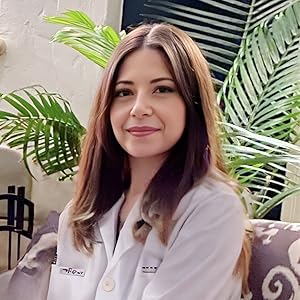Mark Gladwin
关于作者
Bio Mark Gladwin received his M.D. from the University of Miami Honors Program in Medical Education in 1991. After completing his internship and chief residency at the Oregon Health Sciences University in Portland, Ore., he joined the NIH in 1995 as a critical care fellow in the Clinical Center. After completion of a clinical fellowship in pulmonary medicine at the University of Washington in Seattle, he returned for a research fellowship at the Critical Care Medicine Department, CC, under the mentorship of James Shelhamer, Frederick Ognibene, Alan Schechter, and Richard Cannon. He later served as the Chief of the Pulmonary and Vascular Medicine Branch within the NHLBI, NIH. In August of 2008, Dr. Gladwin became Chief of the Pulmonary, Allergy and Critical Care Medicine Division at the University of Pittsburgh School of Medicine and the Director of the newly formed Hemostasis and Vascular Biology Research Institute. Clinical Interests Dr. Gladwin’s clinical research and expertise focuses on pulmonary hypertension and pulmonary complications of sickle cell disease. He is currently the PI on the multi-center clinical trials Walk-PHASST (Pulmonary Hypertension and Sickle Sildenafil Therapy Trial) and DeNOVO (Delivery of NO for Vaso-Occlusive pain crisis in sickle cell disease). He has served as a principal or associate investigator on more than 25 human subjects protocols and holds seven FDA INDs for the use of investigational therapeutic medications, including nitrite, carbon monoxide, L-NMMA, and sildenafil. Research Interests Since 1998, Dr. Gladwin's research activities have led to four scientific discoveries. The discoveries described below have resulted in more than 190 published peer-reviewed manuscripts, 25 approved human subject protocols, and more than 1,000 patient protocol enrollments at the NIH Clinical Center, during Dr. Gladwin’s Tenure as an NIH Branch Chief. These investigations form the backbone of Dr. Gladwin’s current work at the University of Pittsburgh’s Vascular Medicine Research Institute and the Division of Pulmonary, Allergy and Critical Care Medicine. (1) The discovery that the nitrite anion is a circulating storage pool for NO bioactivity (Gladwin, et al. PNAS 2000) that regulates hypoxic vasodilation (Cosby Nature Medicine 2003) and the cellular resilience to low oxygen and ischemia (Duranski JCI 2005). (2) The discovery of a novel physiological function for hemoglobin as an electronically and allosterically-regulated nitrite reductase (Cosby, et al. Nature Medicine 2003; Huang et al. JCI 2005). These studies reveal that nitrite is a potent vasodilator in humans and is bioactivated by reaction with deoxyhemoglobin (and myoglobin) to generate NO preferentially under hypoxic conditions; they also suggest that hemoglobin has an "enzymatic" property as a nitrite reductase that participates in hypoxic vasodilation. In related translational studies, Dr. Gladwin has demonstrated that inhaled nitrite reverses hypoxic neonatal pulmonary hypertension in sheep (Hunter, et al. Nature Medicine 2004), and that infused nitrite solutions prevent post-subarachnoid hemorrhage-induced vasospasm in primates (Pluta et al. JAMA 2005) and prevent hepatic and cardiac ischemia-reperfusion injury and infarction in mice (Duranski et al. JCI 2005). (3) The characterization of a novel mechanism of disease, hemolysis-associated endothelial dysfunction (Reiter, et al. Nature Medicine 2002; Morris et al. JAMA 2005; Minneci et al. JCI 2005; Rother et al. JAMA 2005). This work has described a state of resistance to NO in patients with sickle cell disease caused by scavenging of nitric oxide by hemoglobin that is released into plasma during hemolysis. (4) The mechanistic, clinical, and epidemiological description of a human disease syndrome, hemolysis-associated pulmonary hypertension (Gladwin, et al. NEJM 2004). He has found that pulmonary hypertension occurs in 30% of patients with sickle cell disease, is a major cause of mortality in this population (odds ratio 10:1), and is strongly associated with high hemolytic rate, iron overload, and kidney disease.
阅读完整简历















